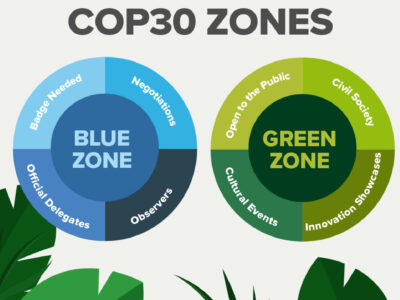
NEW YORK (October 7, 2015)—The recent flooding in South Carolina is yet another reminder of just how much destruction natural disasters can cause and how ill prepared communities throughout the US continue to be. Extreme events such as flooding, drought, and storms are leading to not only short-term economic and health impacts but are setting the stage for significant struggles for future generations.
As we look back at the last 10 years of extreme events, the response and recovery to Hurricane Katrina, Superstorm Sandy and the Ebola Crisis are a few of the many that have tested our disaster readiness. Now, climate change and the global refugee crisis are increasingly recognized as significant and persistent threats to children and other vulnerable populations.
Globalization, population growth, and consistent reliance on fossil fuels are clearly associated with growing population-level vulnerabilities. Thought leaders from Columbia University and the Earth Institute’s affiliated centers will assemble Wednesday, October 7, for a multi-disciplinary dialogue which will explore what we have learned from past events and what the latest science tells us about the future of disaster preparedness, response and recovery.
The seminar will kick off with keynote presentations by Irwin Redlener, MD, Director, National Center for Disaster Preparedness, The Earth Institute, and Professor of Health Policy and Management, Mailman School of Public Health; and Jeffrey Sachs, Director of The Earth Institute.
“As we move to prevent or improve our response to the disasters that we’ll undoubtedly face in the next decade, we want to make sure we understand the risks and have learned lessons from the catastrophic events of the past ten years,” said Dr. Redlener. “Unfortunately, there are lessons observed that have not been applied, preparedness budgets have been slashed and new threats that we don’t fully understand.”

“The world is embarking on the new Sustainable Development Goals, including the priorities to eliminate extreme poverty, improve population health, stop climate change, and invest in education for all,” said Professor Sachs. “Societies that remain excessively vulnerable to disasters may see their gains wiped out by inability to prevent, prepare for or respond to major disasters. Developing resilient societies, resilient economies and resilient individuals is a core element of ensuring truly sustainable development.”
Climate Change
According to Adam Sobel, Professor of Applied Physics and Applied Mathematics, Columbia School of Engineering and Professor of Earth and Environmental Sciences, Lamont-Doherty Earth Observatory, The Earth Institute, and an expert on climate change, “Human-induced climate change is already increasing the frequency and severity of several kinds of large-scale disasters that affect human populations across the globe. This climate change influence will only increase with time.” Given last week’s Hurricane Joaquin and the resulting devastation, Sobel continued, “I am deeply concerned about rising sea levels, a well-established consequence of persistent climate change. For instance, there is little doubt that this phenomenon is related to increasing risks of severe coastal flooding in areas affected by tropical cyclones or hurricanes.”
Drought
Elisa Petkova, DrPH, a Research Associate at the National Center for Disaster Preparedness who studies drought and its implications on vulnerable populations, commented that “Drought, heat waves and wildfires have wide-ranging and devastating social impacts including morbidity and mortality, dislocation and economic losses.” She continued, pointing out that “Already vulnerable populations, including children and the elderly, people of lower socioeconomic status and the chronically ill are most likely to be affected by drought and heat waves and will likely suffer disproportionately under a changing climate.”
Cyber-threats
Jeb Weisman, PhD, Director of Strategic Technologies at the National Center for Disaster Preparedness said “We tend to think in the here-and-now: economic loss and reputations ruined; warfare and espionage only when caught and after the fact. We need to adopt a creative long-view, as well as our current thrust-and-parry model. Sleeper attacks that leverage all of information technology, our genetic profiles, and personalized medicine. A new Cold War, but with whom? An attack is cheap and does not require an army or a nation-state.”
Jeff Schlegelmilch, MPH, MBA, Managing Director for Strategic Planning & Operations at the National Center for Disaster Preparedness, and the seminar moderator stated “Despite a growing need to increase preparedness and resilience to a wide range of threats, domestic funding for preparedness has been drastically cut back over the last decade. Hospital disaster preparedness, alone, has been reduced by 50% since 2005.” He concluded “Preparedness funding should be viewed as an investment in resilience that can create benefits to communities even before disasters strike.”



